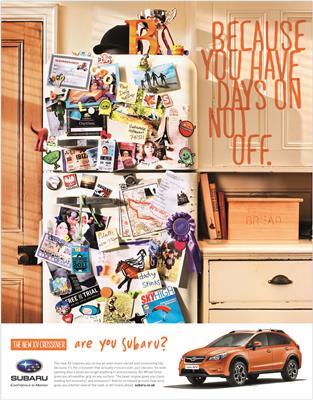Mark Twain once said that 'Any emotion, if it is sincere, is involuntary'. This statement was substantiated by Daniel Kahneman who famously determined that human decisions are influenced more by the fast, implicit system 1 brain, rather than the slower, more considered system 2 brain. Further evidence of this comes from market research experts, BrainJuicer, who have developed a tool called ComMotion. Tested on thousands of adverts globally, it measures an individual’s emotional reaction using ‘FaceTrace’ technology showing, not only what people are feeling, but how strongly and why.
The communication agency Dinosaur, recently wrote an
article that dissects this very phenomenon. If a consumer feels nothing, they will do nothing. If a brand can make them feel, they can make them spend. However, there are two types of emotional responses that need to be considered. There is the kind that is often leveraged at point of sale at supermarkets and food retailer’s, where cost competition is king and the biggest offers are the best sellers. The consumer experiences an emotional response, normally based on impulse, which drives them to buy the product in-front of them. This type of consumer engagement, while providing short-term profits, is often a short-term solution for bolstering a brand and whilst being effective, is easily eclipsed.
It is the second type of emotional response that brands really need to strive for. If they can establish a personal connection that transcends cost, they can turn impulse purchasing, into lifelong loyalty. But what drives a consumer to seek out a particular brand, and bypass all the others of its kind? As Dinosaur explain in their

article, today’s media-savvy audiences are able to filter and avoid advertising like never before. Marketing must elicit an emotional response in its audience that is wholly authentic and contextually relevant. Consumers need to be inspired, motivated and entertained if their fleeting interaction with a brand is to evolve into a lasting relationship.
Are you Subaru?
In addition, part of the formula is to find an attitude for your brand that your target audience can relate to. Subaru is an example of a company who have attempted to do just this. In their recent campaign by
BJL, Subaru aim to establish a relationship with their market based on mindset, rather than modifications and mileage. They recognise that many people buy a car, not for its technological achievements, but for the way it makes them feel. The brand has created a new communications platform, with on and offline advertising, which focuses on one question:
‘Are You Subaru?’. The campaign aims to speak to those people who buy a car as a representation of their own identity, and who buy a brand because it makes them feel something worth feeling.
Perhaps it all comes down to understanding your demographic, and more importantly, understanding what drives them. Perhaps the signifier of a great marketing campaign is one that can leverage the emotions of the audience without patronising or placating them. It is certainly not an easy challenge to tackle, but it is one that reaps handsome rewards. It is one that requires thinking less about the product itself, and more about the way that people perceive it, or perhaps more importantly, want to perceive it. Everyone wants to feel something: comfortable or confident, seductive or beautiful, we are all driven by the emotions that define us. It is the job of the marketing agency to not only recognise this, but to react to it. With so many options in today’s society, it can be difficult to overcome a consumer’s indifference. But ultimately, to persuade someone to buy your product over all the others, you have to make them feel something, and more importantly, make them feel something that matters.
Observations inspired by insight articles posted on
haystackonline.com. Read more from haystackonline in our
Clubhouse.
 article, today’s media-savvy audiences are able to filter and avoid advertising like never before. Marketing must elicit an emotional response in its audience that is wholly authentic and contextually relevant. Consumers need to be inspired, motivated and entertained if their fleeting interaction with a brand is to evolve into a lasting relationship.
article, today’s media-savvy audiences are able to filter and avoid advertising like never before. Marketing must elicit an emotional response in its audience that is wholly authentic and contextually relevant. Consumers need to be inspired, motivated and entertained if their fleeting interaction with a brand is to evolve into a lasting relationship.